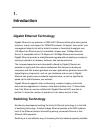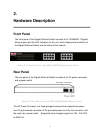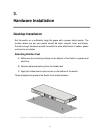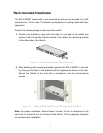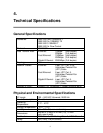
1.
Introduction
Gigabit Ethernet Technology
Gigabit Ethernet is an extension of IEEE 802.3 Ethernet utilizing the same packet
structure, format, and support for CSMA/CD protocol, full duplex, flow control, and
management objects, but with a tenfold increase in theoretical throughput over
100-Mbps Fast Ethernet and a hundredfold increase over 10-Mbps Ethernet.
Since it is compatible with all 10-Mbps and 100-Mbps Ethernet environments,
Gigabit Ethernet provides a straightforward upgrade without wasting a company’s
existing investment in hardware, software, and trained personnel.
The increased speed and extra bandwidth offered by Gigabit Ethernet are
essential to coping with the network bottlenecks that frequently develop as
computers and their busses get faster and user applications generate more traffic.
Upgrading key components, such as your backbone and servers to Gigabit
Ethernet can greatly improve network response times, as well as significantly
speed up the traffic between your subnets.
Gigabit Ethernet supports video conferencing, complex imaging, and similar
data-intensive applications. Likewise, since data transfers occur 10 times faster
than Fast Ethernet, servers outfitted with Gigabit Ethernet NIC’s are able to
perform 10 times the number of operations in the same amount of time.
Switching Technology
Another key development pushing the limits of Ethernet technology is in the field
of switching technology. A switch bridges Ethernet packets at the MAC address
level of the Ethernet protocol transmitting among connected Ethernet or fast
Ethernet LAN segments.
Switching is a cost-effective way of increasing the total network capacity available
1






